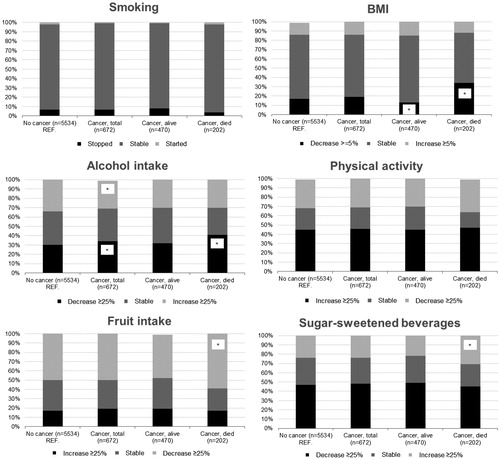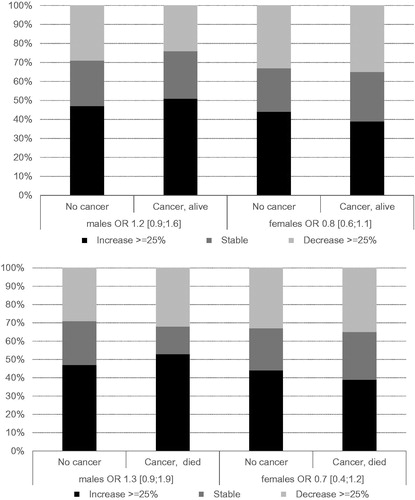Figures & data
Figure 1. Proportion of partners who changed their health behavior according to cancer status (partners of persons who remained cancer-free (‘No cancer’); Partners of persons diagnosed with cancer (‘Cancer, total’); partners of persons who remained alive after cancer (‘Cancer, alive’); and partners of person who died after cancer (‘Cancer, died’)). Analyses were adjusted for age, gender and education; * indicates p < 0.05 in comparison with the no cancer group.

Table 1. Characteristics of partners of persons diagnosed with cancer and partners of persons who remain cancer-free at baseline.
Table 2. Health behaviors of partners of persons diagnosed with cancer and partners of persons who remain cancer-free between baseline and follow-up.
Figure 2. Stratified analysis for males and females in case interactions between gender and cancer status were significant. Proportion of male and female partners who changed their health behavior according to cancer status. Odds ratios (OR) with 95% confidence intervals (CI) for improving versus not improving (stable or worsening) the health behavior. Analyses were adjusted for age and education. (a) change in physical activity among partners of persons who remained alive after cancer (‘Cancer, alive’) versus partners of persons who remained cancer-free (‘No cancer’). (b) Change in physical activity among partners of person who died after cancer (‘Cancer, died’) versus partners of persons who remained cancer-free (‘No cancer’).

